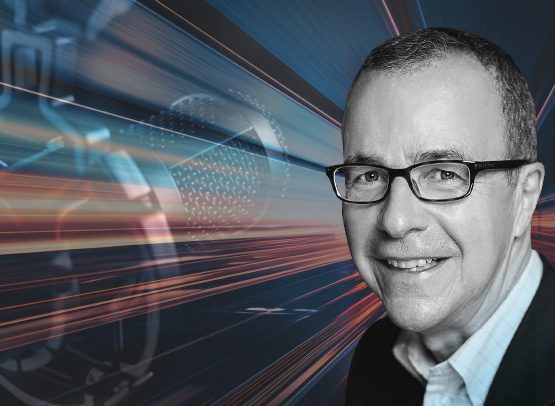The pace of change has never been higher. But has the fundamental nature of it evolved? How do you adapt communications in a lightning-fast, technology-driven world for human brains that are the same as they were fifty (or fifty thousand) years ago? And most importantly, how do these questions intersect with the way leaders should run their organizations?
These are the questions we discussed with some of the best and most experienced change practitioners in the field. The discussion featured two guests from Deloitte: Ross Kerr, Partner in Human Capital, Consulting and Kate Morican, Partner of Strategic Change and Transformation, along with our own Mark Attard, the President of Livewire Communications.
We wasted no time.
The conversation was lively and informative, jumping from area to area. We’ve distilled the key points.
Key takeaway #1 – The focus has shifted from simply communicating change (for alignment) to impacting behaviour (for results)
The quality of the question you ask determines the quality of the answer you’ll receive. (And if that phrasing is too platitudinous for you, consider the classic data scientist mantra “garbage in = garbage out”.)
This is a recurring note in our conversation. As our understanding of change and communication becomes more sophisticated, we can ask better questions and drive better outcomes.
Kate cuts right to the point: “The industry’s focus used to be squarely on change training and communications, but change practitioners did not make the connection to ask ’will these things help us realize the business benefit behind the change we’re making?’”
She continues, answering the question she’s just set up: “you have to define the business outcomes you’re hoping to achieve, as well as the behavioral changes required to get there. Without this step, what good is measurement? What are you actually measuring?”
Ross jumps in. “Exactly. It’s like using engagement as the KPI for training. People can enjoy training and be engaged with it – who doesn’t like a free breakfast? – but the real measure of success is if they apply that training on the job.”
For a long time, employee engagement was the go-to measure for change management. But now we’ve pushed the causal envelope to higher-level outcomes. What do engaged employees do? They’re more productive and they deliver better customer experiences (CX), both of which can drive increased revenue. Better then to measure CX and revenue over just engagement itself. Measure what you want to move.
This approach also has the benefit of focus. We love data, and often think that more is always better. Focusing on the business outcomes you’re driving will help remove the temptation to collect data that’s interesting but not relevant, reducing the burden of interpretation and analysis.
Key takeaway #2 – Change communication itself has become agile, evolving from an ad-hoc approach, to a campaign approach, to the “always on” approach used today
It’s no longer sufficient to look at communications as a part-time endeavor. Even in times of relative stability, employees need line-of-sight to what’s happening in the business, what role they play in achieving the strategy, and what potential changes might be coming.
Mark frames the challenge: “employees import their expectations about media into their organization.” And in a world of 24-hour news and an ever-expanding Netflix library, organizations can’t afford to pause the ongoing dialogue they have with employees. If a tv station goes dead, people change the channel. If Netflix stops releasing new content, people unsubscribe. So too do employees tune out from their organization in the absence of salient touchpoints.
Note that this doesn’t supersede the idea of proportionality and targeting. “Is every single employee excited about a new centralized finance system?” she asks. The answer is “of course not,” which means that messaging needs to be tailored to the audience it impacts. And if that new system will be hugely disruptive to the relevant employees’ day-to-day functioning, then it will demand a robust communication plan that illustrates a compelling future state and delivers a “what’s in it for me?”. If it’s a minor change, it doesn’t need to command the same degree of attention. Size and scale matter.
Mark adds a final detail to consider: “We’re talking about one kind of communication. But what other dialogues are happening? And how might that answer differ depending on what part of the organization you ask and what part of the cascade they’re in? You need to provide relevancy to each unique community of employees.”
The larger and more distributed an organization is, the more discrete audiences it has. And of course, those audiences have unique needs and receptivity to change. This can be especially salient between head office and satellite offices, or frontline and corporate employees.
Key takeaway #3 – Microtargeting, personalization, and dialogue are powerful tools, but must be backed up with the right strategy and organizational resources
Communication has evolved far beyond the simple email blast. Ross describes tactics like organizing employee hackathons to solve intractable problems, as well as harnessing the power of gamification in learning to ensure that employees actually experience new technology rather than just hear about it.
Mark adds that using digital tactics like this – where the audience takes a personalized journey – opens up fantastic measurement opportunities. You can measure the percentage of employees who have completed training, see where people are getting stuck, and even introduce tactics like A/B testing to continually refine your approach.
However, these new techniques come with a cost: both the literal cost of producing the communications (usually paid by the comms and creative teams) and the attentional cost to every single employee consuming the communication. But the effort is worth it to connect employees to your company’s purpose and strategy in a way that’s salient to them.
The group is in their element. Ross introduces a new idea, Mark riffs on it, Kate jumps in to flesh things out. Another idea comes up and the roles switch.
“These tactics give employees the power and opportunity to act.”
“Yes, but you’re also committing yourself to action. You can’t hold a hackathon, get a hundred of employees to contribute, and then not implement what they’ve done.”
“People have much higher expectations of their leaders now. That old school ‘command and control’ style doesn’t work anymore.”
“That’s right, but before leaders can be tasked with driving a particular change, they first have to go through the change journey themselves.”
“Yes! And because people like to hear from their direct leaders – the CEO is great, but employees want to know how their boss feels about a change – those direct leaders need to be well equipped.”
“And there’s also the burden of interpretation. There’s so much data and messaging floating around that leaders need to be expert interpreters and meaning-makers.”
Kate wraps the topic up nicely: “The best way to communicate a change is where people feel the most connected to the organization. Leverage the channel that makes the most sense,” she says. “I’m a very practical person.”
Key takeaway #4 – the more things change, the more they stay the same
The group is having fun, but our time is running short. I close the interview with a final question.
“If you could bring the people you were ten years ago into the present, what do you think would surprise you the most?”
Ross doesn’t miss a beat. “On one hand, I want to say how little some things have changed. It’s still a struggle to get orgs and leaders to see the importance and value of investing in people to help manage change. But on the other hand, my past self would be amazed at the sophistication of tools available to execute on that mandate – things like AI, measurement, behavioral and psychological insights, etc.”
Kate jumps in. “My past self would be most surprised by the speed with which you have to execute, and how fast you have to help organizations move through change. Being able to move through change faster is now one of the ultimate competitive advantages.”
Mark concludes the interview, noting that “There’s a much greater volume of information that moves through the organization and that people have to absorb. It’s so much that employees are often receiving different messages from different parts of the organization, all at once. I think it would surprise me to see how so many of these messages are received as noise by employees. It was always important to connect messages to the vision, strategy and purpose of the business – but now it’s absolutely critical.”
We end the call. Mark and I look at each other. We exhale.
“That was great.”







